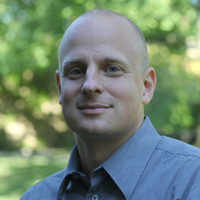|

Peter Behrensdorff Poulsen
Project Manager
DTU Fotonik
|
|
Which technological innovation will dominate in 2016?
“I think that virtual reality (VR) will become mainstream through what are known as ‘head mounted displays’ in the form of, for example, Oculus Rift, HTC Vive and Samsung Gear VR. The price for some of the technologies is now under DKK 5,000, and the quality is good. The benefit of using VR headsets as presentation tools is that it allows users to step into a virtual world, where they can look at a stretch of road in Avedøre, for example, or experience how the light varies between products from different light fitting manufacturers. There are huge sums to be saved in making the right choices during the procurement process, rather than choosing to fit miles and miles of road with lights that provide sub-optimal illumination.”
“With the numerous VR displays that’ll become available in 2016, this transformation will move one step closer and create a parallel universe that is sure to change the way we go to school, work, meet and get our entertainment. For instance, I’m sure that VR will overhaul history lessons and add a completely new dimension to teaching. How many history books have been seen as synonymous with boredom when the history of Ancient Greece was related through an endless series of black and white photos of cracked amphoras?”
Which technologies will be gone in 2016?
“The filament light bulb and halogen lights have long since started to disappear from the lighting market, driven out by the significantly higher efficiency and durability of LED technology. However, the rising efficiency of LED solutions and the superior lighting quality they have achieved in recent years are set to make mercury lights, fluorescent strip-lights and low-energy bulbs increasingly rare.”
|